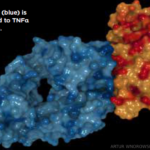- Serious infections have occurred. Consider the risks and benefits prior to initiating brodalumab in patients with a chronic infection or a history of recurrent infection. If a serious infection develops, discontinue brodalumab until the infection resolves.
- Evaluate patients for TB prior to initiating treatment with brodalumab.
- Crohn’s disease occurred in brodalumab-treated patients during clinical trials. Discontinue brodalumab if this develops.
- Avoid using live vaccines concurrently with brodalumab.
Dosage & Administration
The recommended dose is 210 mg administered by subcutaneous injection at Weeks 0, 1, and 2 followed by 210 mg every two weeks. If an adequate response has not been achieved after 12 to 16 weeks of treatment, consider discontinuing therapy. Continued treatment beyond 16 weeks in patients who have not achieved an adequate response is not likely to result in greater success.
Commentary: Advise the patient to read the FDA-approved medication guide before starting to use brodalumab and each time the prescription is renewed, because important new information may have been added. The most common adverse reactions (≥3%) are arthralgias and nausea.
Ixekizumab (Taltz):22 injection
Drug class: Monoclonal antibody, IL-17-RA
Warnings & Precautions
- Serious infections have occurred. Instruct patients to seek medical advice if signs or symptoms of clinically important chronic or acute infection occur. If a serious infection develops, discontinue ixekizumab until the infection resolves.
- Evaluate for TB prior to initiating treatment.
- If a serious hypersensitivity reaction occurs, discontinue ixekizumab immediately and initiate appropriate therapy.
- IBD, including exacerbations, occurred during clinical trials. Monitor closely patients who are treated with ixekizumab and have IBD.
Dosage & Administration
Ixekizumab is administered by subcutaneous injection. The recommended dose is 160 mg (two 80 mg injections) at Week 0; followed by 80 mg at Weeks 2, 4, 6, 8, 10 and 12; then 80 mg every four weeks.
Commentary: The FDA approval of ixekizumab for psoriasis was based on three randomized, controlled clinical trials that included a total of 3,866 adult patients. The most common adverse reactions (≥1%) are injection-site reactions, upper respiratory tract infections, nausea and tinea infections.
Secukinumab (Cosentyx):23 injection
Drug class: Monoclonal antibody, IL-17-RA
Warnings & Precautions
- Serious infections have occurred. Caution should be exercised when considering using secukinumab in patients with a chronic infection or a history of recurrent infection. If a serious infection develops, discontinue the drug until the infection resolves.
- Prior to initiating treatment with secukinumab, evaluate for TB.
- Caution should be exercised when prescribing secukinumab to patients with IBD; cases of IBD were observed in clinical trials.
- If an anaphylactic reaction or other serious hypersensitivity reaction occurs, discontinue secukinumab immediately and initiate appropriate therapy.
Dosage & Administration
The recommended dose is 300 mg by subcutaneous injection at Weeks 0, 1, 2, 3, and 4, followed by 300 mg every four weeks. Each 300 mg dosage is given as two subcutaneous injections of 150 mg. For some patients, a dosage of 150 mg may be acceptable.
Commentary: Clinical studies with secukinumab showed that patients had a 67–87% PASI 75 response. At Week 12, 81% of those patients had maintained PASI 75, an improvement maintained after one year. The most common adverse reactions (≥1%) are nasopharyngitis, diarrhea and upper respiratory tract infection.



